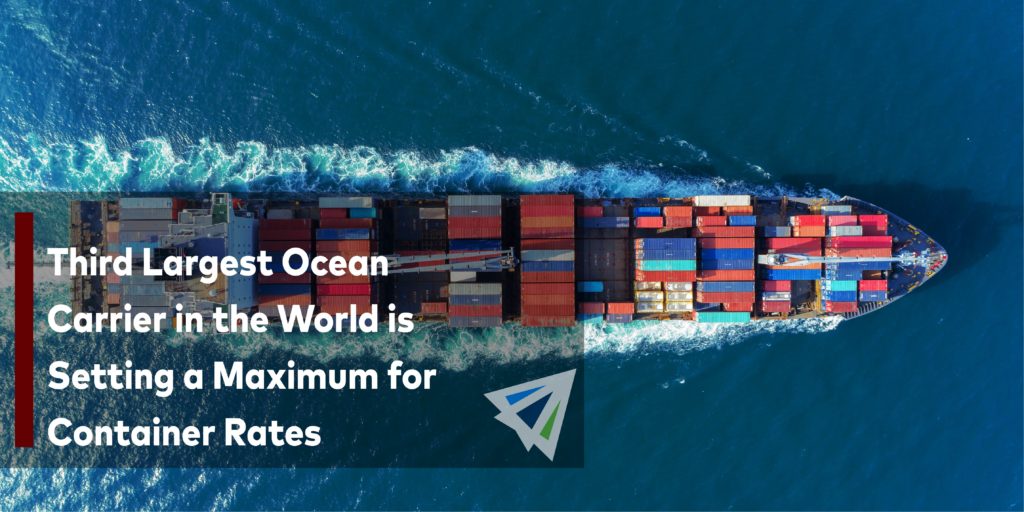Competitive Edge
September 15th, 2021
Stay Current with Interlog’s Weekly Newsletter:
Sign up for our next Coffee & Cargo webinar –> CLICK HERE
Ocean Freight Market Update
Europe –> North America:
Rates: Expected to keep increasing into Q4
Space: Limited – Expect some delays to US South East as Hurricane Ida has significantly set back the Port of NOLA.
Capacity: Tight – Fewer bookings to inland rail ramp destinations
TIPS: With capacity tight, it is recommended to book on premium services. Recommend to book 4-5 weeks in advance. Port of NOLA is still recovering from delays and congestion from Hurricane Ida.
North America –> Asia:
Rates: Steady, with some very low costs from USWC to Chinese base ports. Read below for weather implications that may affect congestion.
Space: Tight
Capacity: Steady for Standard Containers
NOTICE: Shanghai Port and Airport is recently reopened after a short shutdown due to Typhoon Chanthu. Vessels around Xaimen and Ningbo have been asked to evacuate as well, which is now resumed.
China -> North America
Rates: Most origins have increased in rates once again as September rates are in full swing. A mid-September GRI is expected this week
Space: Very Limited
Equipment Availability: Limited/Under Tight Capacity
NOTICE: Shanghai Port and Airport is recently reopened after a short shutdown due to Typhoon Chanthu. Vessels around Xaimen and Ningbo have been asked to evacuate as well, which is now resumed.
Did You Know?
Freight News
Typhoon Chanthu: What you need to know
Although it has been downgraded from a super typhoon to a strong typhoon on Sunday, typhoon Chanthu is making an impact Monday evening. According to South China Morning Post winds are expected up to 170 kilometers (105 miles) per hour near its eye, on Monday night. The current storm system formed in early September near the Philippines, moving northland towards the east coast of Taiwan before approaching the eastern coastline of mainland China.
All flights out of the Pudong airfield, a major international gateway in China, were halted after 11am, while services at the Hongqiao airport were suspended after 3pm. All schools were called off, effective through Tuesday.
The Yangshan port, is halting operations, “One or two days of shutdown will not be a big issue for the shipping industry,” said Lu Ming, an agent at Shanghai Ocean Shipping Agency. Xiamen and Ningbo ports have also been affected as vessels have been asked to vacate the storm area.
On Monday morning, drenched weather resulted in an impasse on Shanghai’s elevated roads. Turned out to be more congested than usual, with more traffic accidents being reported during the rush hours. In Zhejiang, officials have upgraded its emergence response to Chanthu to the highest level on Sunday, with schools, air, and rail services in several cities such as Ningbo suspended.
CMA CGM caps its rates: What does this mean for container shipping?
France’s CMA CGM, will cease all increases in spot rates worldwide through February 1st, effective immediately, reported by Freightwaves. It’s no secret that rates have been through the roof since the beginning of 2021 and CMA CGM intends to do something about it. “Although these market-driven rate increases are expected to continue in the coming months, the Group has decided to put any further increases in spot freight rates on hold for all services operated under its brands (CMA, CGM, CNC, Containerships, Mercosul, ANL, APL).”. CMA CGM’s reasoning for this is to put its long-term relationships with customers first in these unprecedented times in the shipping industry.
There is some hesitation surrounding this news from CMA CGM. Jefferies analyst Randy Giveans told American Shipper, “It could be like a gas station after Hurricane Ida telling people it’s not going to increase gas prices, when it only has 8 gallons left in the tank. But if they’re saying they’re not going to increase rates, how much have they already increased rates?” Especially with the spot price limit only being from September to February, assuming CMA CGM capacity is already almost full from then, how impactful will this truly be?
It would make sense for any unsold capacity in Q4, to reserve that capacity for contract customers, and the remaining available for the remaining customers. Now this could be an advantage for contractual customers with pre-existing relationships, but a disadvantage for typically smaller customers who may prefer to shop around to find the best transportation deals for each shipment.
Sign up for our
industry answers
Our team works to provide valuable, unique, and relevant content to assist you in finding solutions. Sign up now.

